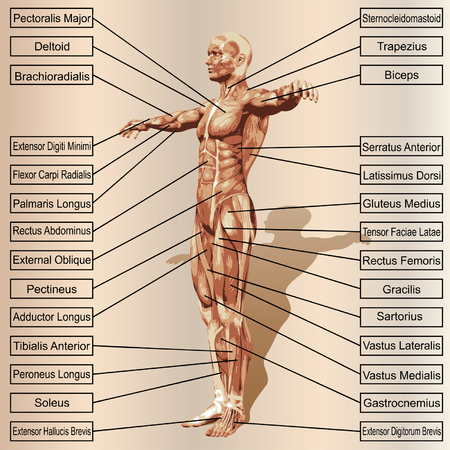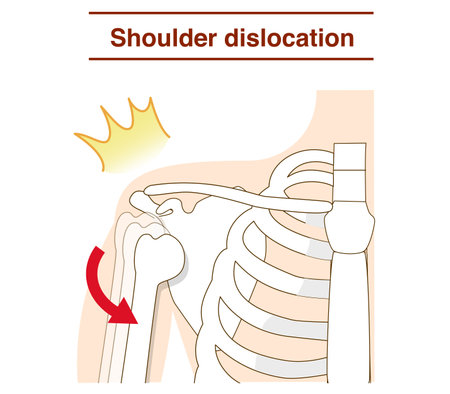Introduction to Knee Osteoarthritis and Physiotherapy in the UK
Knee osteoarthritis is a common degenerative joint condition that affects millions across the UK, particularly among older adults. Characterised by pain, stiffness, and reduced mobility, this chronic disorder can have a significant impact on daily activities and overall quality of life. According to recent NHS data, knee osteoarthritis represents one of the leading causes of disability among Britons, often resulting in substantial personal and societal costs. Physiotherapy plays a crucial role within the British healthcare system for those living with knee osteoarthritis. As part of the NHS approach, physiotherapists are frequently involved early in the management process to help reduce pain, improve function, and delay or prevent surgical interventions. In the UK context, physiotherapy is widely recognised not just as an adjunct but as a foundational component of holistic knee osteoarthritis care, tailored to each patient’s unique needs and supported by evidence-based protocols.
Core Physiotherapy Techniques for Knee Osteoarthritis
In the UK, physiotherapists adopt a holistic and evidence-based approach to managing knee osteoarthritis (OA), focusing on improving function, reducing pain, and enhancing quality of life. The cornerstone interventions include exercise therapy, manual therapy, and patient education, all tailored to suit the individual’s needs and lifestyle. Below, I discuss each method as commonly practised in British clinical settings.
Exercise Therapy
Exercise is widely regarded as the first-line intervention for knee OA in the UK. Programmes typically combine strengthening, aerobic, and flexibility exercises. The National Institute for Health and Care Excellence (NICE) guidelines recommend these activities due to their proven benefits in pain relief and functional improvement. Physiotherapists often prescribe home-based routines alongside supervised sessions to encourage self-management and adherence.
| Type of Exercise | Purpose | Typical Example |
|---|---|---|
| Strengthening | Support joint stability and reduce load on the knee | Quadriceps sets, resistance band squats |
| Aerobic | Improve cardiovascular health and overall mobility | Cycling, brisk walking |
| Flexibility | Increase range of motion and decrease stiffness | Hamstring stretches, calf stretches |
Manual Therapy
Manual therapy encompasses hands-on techniques such as joint mobilisation and soft tissue massage. While the evidence base is more modest compared to exercise therapy, many UK clinics use manual therapy as an adjunct to relieve pain and improve movement temporarily—particularly in patients who are struggling to engage with active exercises due to discomfort.
Common Manual Techniques:
- Knee joint mobilisation (gentle gliding movements)
- Patellar mobilisation (improving patella tracking)
- Myofascial release around the thigh muscles
Patient Education
Empowering patients through education is a fundamental part of physiotherapy practice in Britain. Sessions typically cover the nature of osteoarthritis, self-management strategies, pacing techniques, weight management advice if appropriate, and guidance on activity modification. This approach not only demystifies the condition but also fosters long-term engagement with rehabilitation.
The Role of Evidence-Based Practice
UK physiotherapists closely follow NICE guidelines and relevant research to ensure interventions are up-to-date and effective. Most clinics perform regular audits and participate in continuous professional development, ensuring that core techniques remain consistent with evolving best practices. Collaboration with GPs and multidisciplinary teams is also commonplace across the NHS and private sectors.

3. Integrating Personalised Treatment Plans
Within the context of knee osteoarthritis recovery in the UK, British physiotherapists place strong emphasis on developing personalised treatment plans that reflect both clinical best practice and individual patient needs. This approach aligns closely with NHS pathways and the prevailing models of patient-centred care. Rather than applying a one-size-fits-all protocol, physiotherapists undertake thorough assessments, considering the patients medical history, lifestyle, occupation, and personal goals.
Tailoring interventions involves collaborative goal-setting between the physiotherapist and the patient. For example, an older adult wishing to maintain independence at home may receive a different exercise regimen compared to a younger person aiming to return to sports. NHS guidelines encourage this nuanced approach, supporting practitioners in adapting evidence-based techniques—such as manual therapy, targeted strengthening exercises, and pain management strategies—to the realities of each patient’s daily life.
Communication is key throughout this process. British physiotherapists routinely engage patients in discussions about their progress and preferences, ensuring treatments remain relevant and motivating. Multidisciplinary collaboration is also common; referrals to rheumatologists, orthopaedic specialists, or community support services are made when appropriate, all within the established NHS framework. Ultimately, by integrating personalised treatment plans into routine practice, British physiotherapists help foster better long-term outcomes for individuals managing knee osteoarthritis.
4. Collaboration with Multidisciplinary Teams
In the UK, knee osteoarthritis recovery is most effective when physiotherapy is integrated within a multidisciplinary team (MDT) approach. The National Health Service (NHS) strongly encourages coordinated care, recognising that no single professional can address all aspects of a patient’s needs. Physiotherapists, general practitioners (GPs), orthopaedic specialists, and occupational therapists each contribute unique expertise, ensuring holistic support for patients at every stage of recovery.
The Value of Coordinated Care
Collaboration among MDT members streamlines communication, reduces duplication of effort, and allows for more precise tailoring of rehabilitation plans. For example, GPs often serve as the first point of contact, diagnosing knee osteoarthritis and referring patients to physiotherapists or orthopaedic consultants as appropriate. Physiotherapists then assess functional limitations and design evidence-based exercise programmes, while orthopaedic specialists step in for surgical consultations or advanced interventions if conservative management falls short. Occupational therapists may address challenges in daily living activities, providing adaptive strategies to maintain independence at home or work.
Typical MDT Roles in Knee Osteoarthritis Management
| Team Member | Primary Responsibilities |
|---|---|
| General Practitioner (GP) | Initial assessment, diagnosis, referrals, medication management |
| Physiotherapist | Rehabilitation planning, exercise prescription, manual therapy |
| Orthopaedic Specialist | Surgical assessment/intervention, joint injections, advanced diagnostics |
| Occupational Therapist | Daily activity adaptations, equipment recommendations, return-to-work support |
Effective Communication Pathways
Central to successful MDT collaboration is clear communication. In the NHS context, shared electronic health records facilitate information flow between providers. Regular MDT meetings also help ensure all professionals are aligned on treatment goals and patient progress. This structure minimises gaps in care and empowers patients by keeping them informed about their rehabilitation journey.
By embedding physiotherapy within a well-coordinated multidisciplinary framework, UK healthcare providers deliver comprehensive knee osteoarthritis care—balancing clinical efficiency with patient-centred outcomes.
5. Community Resources and Self-management Support
In the UK, community resources play a crucial role in supporting individuals recovering from knee osteoarthritis (OA). Local support groups are often available through community centres, charities, and even some GP surgeries, providing a platform for people to share experiences, access peer support, and stay motivated in their rehabilitation journey. These groups can also serve as valuable sources of information about practical strategies for daily living and adapting to the challenges of OA.
The NHS offers a range of self-management resources tailored specifically for those with knee osteoarthritis. This includes evidence-based online programmes such as ESCAPE-pain, which combine education with exercise routines that can be done at home or in a group setting. The NHS website further provides comprehensive guides on pain management, mobility aids, pacing activities, and maintaining joint health—all designed to empower patients to take control of their recovery outside of formal physiotherapy sessions.
Accessibility to physiotherapy services varies across the UK regions, but recent initiatives have aimed to reduce waiting times and improve direct access to musculoskeletal specialists. Many areas now offer self-referral pathways, enabling patients to book appointments with NHS physiotherapists without needing a GP referral. Additionally, private physiotherapy clinics are widely available and may offer more flexible scheduling options for those seeking immediate attention.
Importantly, several local councils and voluntary organisations run free or low-cost exercise classes tailored for older adults or those with limited mobility. These classes often incorporate elements of physiotherapy practice—such as strength training, balance exercises, and flexibility work—which reinforce clinical recommendations and encourage long-term self-care habits.
Overall, integrating these community-based resources with individualised physiotherapy ensures that people living with knee osteoarthritis in the UK have multiple avenues of support. By leveraging local networks, utilising NHS self-management tools, and accessing physiotherapy across various settings, patients are better positioned to maintain progress and enhance their quality of life throughout the recovery process.
6. Barriers and Opportunities in the UK Context
Integrating physiotherapy techniques for knee osteoarthritis recovery in the UK is not without its challenges. One of the most commonly cited barriers is the extended waiting lists within the NHS system, particularly for initial physiotherapy assessments and follow-up sessions. These delays can hinder early intervention, which is crucial for optimal outcomes in knee osteoarthritis management. Additionally, there are notable regional disparities in access to specialist care, with patients in rural or underserved areas often facing longer travel times and limited choice of providers.
Another challenge arises from resource constraints. Physiotherapists are frequently required to manage high caseloads, which can limit the time available for each patient and restrict opportunities for personalised rehabilitation plans. This sometimes leads to a reliance on standardised exercise handouts rather than tailored interventions. Furthermore, cultural differences and varying levels of health literacy across the UK population may affect patient engagement and adherence to prescribed physiotherapy programmes.
Opportunities for Innovation
Despite these hurdles, there are significant opportunities for innovation within the UKs healthcare landscape. Telehealth and digital physiotherapy platforms have gained traction, especially following the COVID-19 pandemic. These technologies offer an effective way to bridge regional gaps, providing remote consultations and guided exercise sessions that enhance accessibility for those unable to attend in-person appointments.
Collaborative Approaches
Collaboration between NHS trusts, private practices, and community organisations presents another avenue for improvement. By fostering multidisciplinary teams—including GPs, physiotherapists, occupational therapists, and social prescribers—patients can receive more comprehensive care pathways tailored to their individual needs.
Empowering Patients
Finally, increased emphasis on patient education and self-management is key. Empowering individuals with knowledge about knee osteoarthritis and practical strategies for symptom control can improve compliance and long-term outcomes. Workshops, support groups, and accessible online resources all contribute towards this goal, ensuring that patients remain active participants in their recovery journey.
7. Conclusion and Future Directions
In summary, integrating a range of physiotherapy techniques has demonstrated significant potential for enhancing knee osteoarthritis recovery across the UK. This holistic approach—encompassing manual therapy, tailored exercise regimens, patient education, and adjunct modalities—offers a more comprehensive pathway to improve mobility, reduce pain, and promote long-term joint health. As the NHS and private practices continue to adopt evidence-based physiotherapy models, collaboration between clinicians, patients, and policymakers will be essential. Ongoing professional development, investment in community-based rehabilitation programmes, and the utilisation of digital health innovations can further personalise care and bridge gaps in service accessibility. Looking ahead, evolving practices such as tele-rehabilitation, multidisciplinary team approaches, and emerging policy frameworks could significantly enhance outcomes for individuals living with knee osteoarthritis in the UK. By embracing these future directions, the nation stands to benefit from improved quality of life for patients and more sustainable healthcare delivery.

